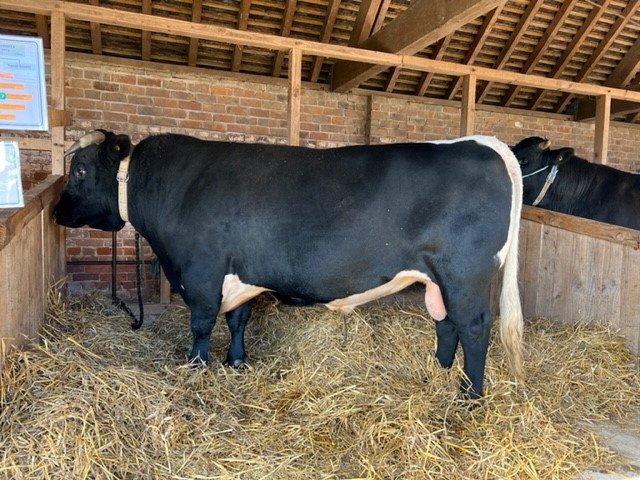
The rare Gloucester cattle breed has been given a much-needed boost following a display of the breed’s benefits at an on-farm event.
The dual-purpose breed produces meat and dairy, but is categorised as a 'priority' breed on the Rare Breeds Survival Trust (RBST) watchlist.
Looking to give a well-needed publicity boost, the Gloucester Cattle Society held an event at Clifford Freeman’s Everes’s Farm, at Redmarley d’Abitot in Gloucestershire.
Expert speakers and guests explored the commercial and environmental opportunities as public interest grows in high quality, environmentally responsible meat and dairy products.
The Gloucester is an ancient breed, numerous in the Severn Vale as early as the 13th Century.
It is easily identifiable due to its distinctive markings – a black-brown body with black head and legs and a white stripe down the back, over the tail and covering the belly.
The breed is famous for the crucial role of Gloucester dairy cow Blossom in Edward Jenner’s 1796 experiment, which paved the way for the first vaccine.
But as farming became more industrialised towards the end of the 20th century, Gloucester herds were progressively replaced by continental breeds and by 1972 only one herd remained.
Thanks to the efforts of the Gloucester Cattle Society alongside RBST, the breed was saved and numbers improved.
However, more recently herd numbers have declined significantly from 54 herds in 2006 to 27 herds in 2020.
The new methodology for the RBST watchlist in 2021 confirmed that the breed was at serious risk.
Event host Clifford Freeman, one of the largest keepers of Gloucester Cattle in the UK, took over the famous Noent herd from his father, who was one of the founders of RBST.
Clifford led a discussion at the event about commercial opportunities of the breed: “Gloucester beef is very tender, with good marbling and a wonderful flavour, and there is strong demand from high end restaurants and butchers," he said.
"The breed is reared slowly, grass-fed in pastures and with very high welfare and environmental standards which is increasingly important to today’s discerning and knowledgeable consumers.”
Charles Martell, founder of cheesemaker and distiller Charles Martell & Son Ltd, drew on his experience with the breed to advise on opportunities in dairy.
He has been making cheese including the famous Double Gloucester, Single Gloucester and Stinking Bishop cheeses for 50 years from one of the oldest herds of Gloucester Cattle in the world.
Single Gloucester cheese has a Protected Designated Origin and can only be made in Gloucestershire using the milk from a dairy herd containing Gloucester cattle.
He explained why Gloucester cattle are excellent for dairy production, with the breed’s flat lactation curve giving an even production of milk for up to 300 days.
During the event, RBST chief executive Christopher Price discussed how promotion of Gloucester cattle as a breed with great commercial potential while also supporting the environment was important in ensuring the breed has a strong future.
“The Gloucester breed is one of the UK’s rarest and oldest cattle breeds, it is not only an irreplaceable part of Gloucestershire’s heritage but it also has an important role in farming and food production today and for the future.
"Today has shown that with the right knowledge and expertise the breed can form the basis of a profitable business," Mr Price said.
"This event shared invaluable advice from some of the world’s greatest experts on farming with the breed, and encouraged new interest in farming with Gloucester cattle which is crucial to the breed’s survival.”
